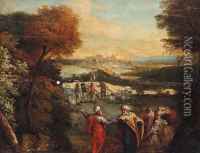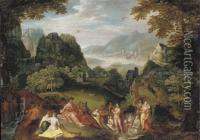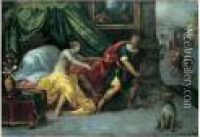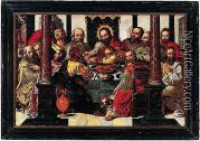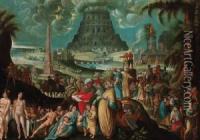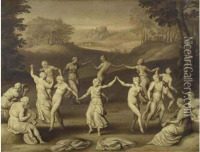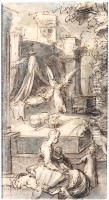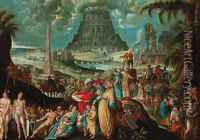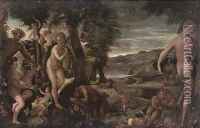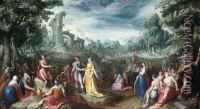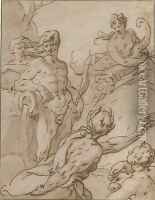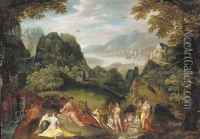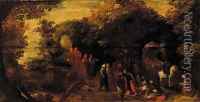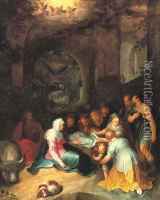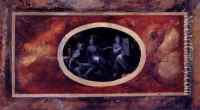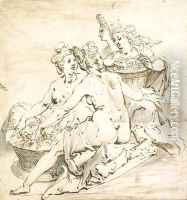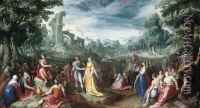Karel Van Mander Paintings
Karel van Mander was a Flemish painter, poet, and art historian born in Meulebeke, West Flanders, in what is today Belgium. He is often referred to as Karel van Mander I to distinguish him from his descendants with the same name. His work as a painter, which included both mythological and religious subjects, was influenced by the Italian Renaissance, particularly the Mannerist style.
Van Mander received his artistic training in the Southern Netherlands and further developed his skills in Rome, where he was exposed to the work of artists such as Giorgio Vasari. After his return to the Low Countries, Van Mander moved to Haarlem in the Dutch Republic, where he became an influential figure in the local art scene and played a significant role in the Haarlem Mannerist school.
Apart from his artistic endeavors, Van Mander is best remembered for his literary contribution to art history, particularly his 'Schilder-boeck' (Book of Painters), published in 1604. This seminal work is a biographical encyclopedia of artists from the Low Countries and Italy. It was inspired by Vasari's 'Lives of the Most Excellent Painters, Sculptors, and Architects' and served as an essential source of information about Dutch and Flemish artists and their work, as well as including a treatise on the principles of art.
Van Mander's 'Schilder-boeck' has been considered a foundational text for the understanding of Northern Renaissance art, and his emphasis on biographical detail has influenced the way art history has been written ever since. His own paintings, while less known today, reflect the transition from the Northern Renaissance style to a more Baroque sensibility. Karel van Mander died in Amsterdam in 1606, leaving behind a legacy as both a practitioner and a scholar of the arts.
